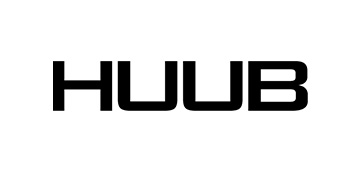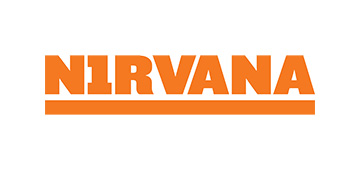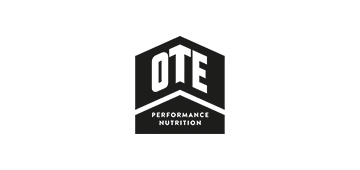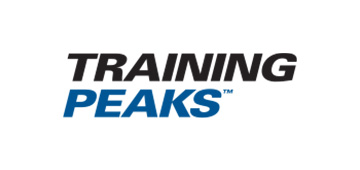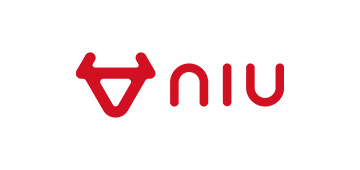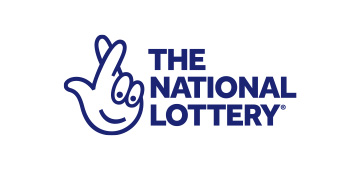Hydration advice for all athletes!
The history of hydration advice for athletes
Hydration advice for athletes has changed dramatically over the last 100 years:
“Don’t get into the habit of eating or drinking in a marathon race: Some prominent runners do but it is not beneficial”
This is a quote attributed to James E Sullivan of the Amateur Athletic Union in 1909 that sums up the general attitude during the early period of organized sport.
As recently as the 1970s many athletes were still adhering to similar ‘nil by mouth’ principles and it was not until the 1980s that things started to change dramatically.
The dangers of dehydration started to trickle down and messages were disseminated to the sporting community in the 1996 American College of Sports Medicine (ACSM) guidelines for fluid intake during exercise1 that included the paragraph:
“During exercise, athletes should start drinking early and at regular intervals in an attempt to consume fluids at a rate sufficient to replace all the water lost through sweating (i.e. body weight loss), or consume the maximal amount that can be tolerated.”
At the time it was frowned upon to be seen without a bottle at your side and every time you visited the bathroom you were encouraged to check that your urine was copious in volume and very pale in colour. Mantras including “2% dehydration leads to a significant drop off in performance” and “if you are thirsty it is too late” were quoted by coaches and other athletes. Many bought into this completely, being especially diligent in consumption of extra fluids in the days leading up to big competitions.
Things had gone from one extreme to another. In hindsight you can see that performances were impaired on occasion by a combination of over consuming fluids in the build up to and during races causing gastric upset and even mild hyponatraemia. In addition failing to understand the subtleties and implications of individual variation in sweat composition was also a hindrance. Thankfully now the message being promoted to athletes seems to be starting to change, albeit relatively slowly at the moment.
Hydration advice today
In his book ‘Waterlogged’ Dr Tim Noakes takes a very detailed and critical look at the largely sports drink industry funded research upon which much of the popular ‘drink ahead of thirst’ hydration advice is based. The text tells the story of the rise of Exercise Associated Hyponatremia (EAH). In all it presents compelling evidence that learning to listen to your body and respond appropriately to thirst signals is actually the best way to regulate how much you need to drink at a given time; a practice that seems to fit with what is observed when we analyse what many elite athletes do anyway.
Noakes cites studies where athletes have been measured during competitive endurance events and many of the best performers have been shown to not only tolerate, but seemingly to thrive on levels of dehydration of up to 7 or 8%2. This, along with other emerging evidence3 certainly starts to call into question the need for and reliability of pre and post exercise weighing to determine how much fluid is required for complete re-hydration; a common practice for many athletes, particularly those in professional team sports where they are monitored by support staff and their hydration strategies dictated by this data.
Whilst there is certainly still a great deal of controversy surrounding the topic of exactly how much athletes should drink (and this is unlikely to change in the near future due to how entrenched many coaches, athletes and scientists in their opinions) what does seem to be clear is that any attempt to significantly override the body’s in built mechanism of thirst; either by drinking well ahead of it or toughing it out and ignoring it, is destined to lead to sub-optimal intake of fluid (be that over or under drinking) and probably reduced performance.
Understanding individual needs
In the field of sports science and sports nutrition support it is becoming more widely acknowledged that universal guidelines or ‘one size fits all’ strategies (such as the aforementioned ACSM guidelines from 1996) are highly unlikely to yield the best results across large group of athletes. Therefore many in the field are willing to find ways of assessing the individual requirements of the athletes they work with to find ways to help them meet their needs more closely.
In terms of hydration this means that weighing athletes before and after training and competition can still be used to gain an insight into their approximate sweat rates and losses over time, however simply insisting that everyone has to drink to replace 100% of those losses post game (or to try to match their losses on a like for like basis during endurance events) is certainly not always necessary nor all that helpful. It may be helpful to use bodyweight change data to flag athletes who have particularly high sweat volume losses and to keep an eye on them during longer, hotter or more intensive training sessions and competitions. These individuals may benefit from having more fluids available to them than some other athletes, but telling them exactly how much to drink or forcing them to replace their losses as quickly as those with lower sweat rates may do more harm than good, especially if their losses exceed the gastric emptying rate of the stomach for example.
To add another layer of complexity to the issue, human sweat contains far more than just water. Electrolytes (electrically charged ions such as sodium, potassium, calcium and magnesium) are also lost and so these ultimately need to be replaced as well as the fluid itself. Whilst it is possible to obtain a lot of electrolytes from the food we eat there are benefits to replacing them during exercise as well; most notably sodium which is considered to be the most important electrolyte to replace during periods of heavy sweating5.
Again, as with how much fluid to drink, the level of electrolyte replenishment needed to optimise sports performance is a source of great disagreement between scientists. What does seem clear is that for relatively short duration activities (less than about 60 minutes) little fluid should be required to sustain performance and water alone (taken to thirst) should be sufficient, assuming the athlete starts the session appropriately fuelled and watered as any fluids and electrolytes lost will be replaced in subsequent meals and their accompanying drinks.
However, when considering longer, hotter and more intense events the picture begins to change. There is a lot of evidence that sweat composition (in terms of the sodium content in particular) varies significantly from person to person. Some athletes have been measured losing as little at 2.3gr of sodium during a 4.5hr training session, with others losing 30gr during the same period4. This represents a 14 fold discrepancy in sodium loss and larger losses have been linked to issues including muscle cramping, reduced cognitive function and premature fatigue. Whilst there is not a great deal of published data to support this, the anecdotal reports around these issues are both numerous and compelling. Recent scientific testing has shown a 23% increase in power, endurance and cognitive function if an athlete hydrates with fluids that match their individual electrolyte loss (particularly sodium replacement).
It is not unreasonable to conclude that large individual variation in both sweat rates and sweat sodium levels may therefore be one reason why some athletes seem to respond very positively to consuming extra sodium before and during exercise and for others it seems to make little or no real difference.
Sports scientists have been measuring the levels of sodium in athlete’s sweat for many years, but this used to be only really available to professionals. However, in recent years with advances in technology and far more people taking part in endurance events in particular, sweat testing is slowly becoming more widely available. This gives more athletes the opportunity to understand their individual physiology in more detail, and the implications it may have for hydration and electrolyte replenishment.
Overall what is clear in terms of how athletes should approach hydration and electrolyte replacement is that optimal performance is likely to stem from following a strategy based on your individual physiology, the demands of your sport and the environmental conditions. The human body does not tend to respond well to a being faced with a large deficiency of anything (water and electrolytes included) but neither does it have anything like an infinite capacity to deal with excess (e.g. issues with hyponatramia when too much water is consumed and complications arising from excessive sodium ingestion7), so just taking in vast quantities of either fluids or electrolytes is definitely not the answer.
Learning what works for your own particular exercise habits and body, using a combination of scientific knowledge, learning to understand sensations of thirst and good old fashioned trial and error is probably the best way to discover what works for you or the athletes you work with.
Simple Tips
• Ensure you start your event/training event hydrated
• Don’t drink more than you need. Remember the stomach can only empty 800-1000mL of fluid/hour. Basically, if you feel fluid sloshing around in your stomach then your body is struggling to utilise the fluid. Ease up on your fluid consumption until that feeling has gone. Also monitor the frequency and colour of your urine.
• Be aware of your mouth getting dry or a salty taste
• Headaches are often a sign of dehydration
• After the event, you will need to consume slightly more fluid than you lost in sweat to cover ongoing obligatory urine losses and glycogen. This is particularly so if the weather is warm and/or humid.
• If you get cramping then seriously consider a hydration test and sodium replacement
• Dehydration can cause cramping, which can result in scar tissue in the muscle. As well as ensuring correct replacement of sodium, get a sports massage to break up the scar tissue, which will help prevent repeat cramping.
Electrolyte Misconception
Many athletes are focused on the loss of potassium and magnesium when they are considering hydration. It is actually sodium that is lost in the biggest quantities, yet it seen in the lowest quantities in off the shelf rehydration products.
The amount of sodium can vary greatly from person to person (range approximately 200mg/l to 2000mg/l) whilst the variation in the other electrolytes is far less pronounced or significant for exercise performance.
Different theories exist as to why there is such a wide range of sodium loss between people, including acclimatisation and diet. Certain genetic factors look likely to play a key role. At the extreme people who suffer with the genetic disorder Cystic Fibrosis (CF) lose huge amounts of sodium in their sweat, however some healthy individuals can lose amounts not too dissimilar to those found in the CF patients. In other words whilst sweat sodium composition can alter slightly with acclimatisation or diet, your genetic pre-disposition is instrumental in how much sodium you basically excrete in your sweat.
About Sweat Testing
A sweat test involves taking a sweat sample from an athlete and analysing it for sodium concentration. Various methods can be used, including attaching absorbent patches to the skin that become soaked in sweat during exercise, then sent to a lab for analysis, however exercise free testing is also possible.
Exercise free sweat testing makes the process much simpler and quicker for an athlete and a result can be obtained in about 25 minutes with the following steps:
1) Firstly a chemical called Pilocarpine is applied to the forearm using a technique called iontophoresis (using a small electrical current to ‘push’ the chemical into the skin). Pilocarpine causes the sweat glands in a small area of the arm to start contracting.
2) A specialist capillary tube in a collection device called a ‘Macroduct’ is then applied to the arm and sweat is collected into the tube.
3) Once a sufficient amount of sweat is collected in the tube it is removed from the athlete’s arm and the sample passed through a machine that measures the conductivity of the solution.
4) From the conductivity reading the amount of sodium in the sample can be calculated and the information fed back to the athlete straight away.
Sweat sodium levels typically fall between 200mg/l and 2000mg/l in healthy athletes and this information is used to advise them on how much sodium they should consume before and during exercise to meet their losses.
Helen Barklam is a nutritional therapist specialising in sports nutrition. She is one of just a handful of hydration testing specialists in the UK. Helen has worked with Premiership football clubs, paralumpic athletes, marathon runners, triathletes, cyclists, footballers, rugby players and swimmers.
Helen will hold talks at your club or webinars, where people can dial in from the comfort of their own homes, to talk about various aspects of sports nutrition to help athletes get the most out of their sport.
07917 148900
helen@helenbarklam.com
www.helenbarklam.com




